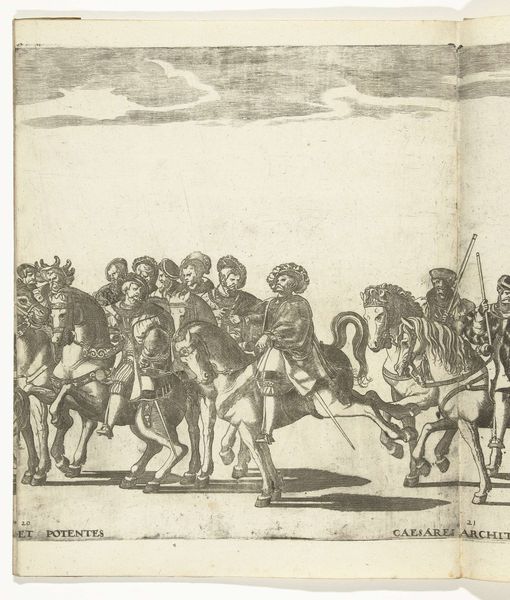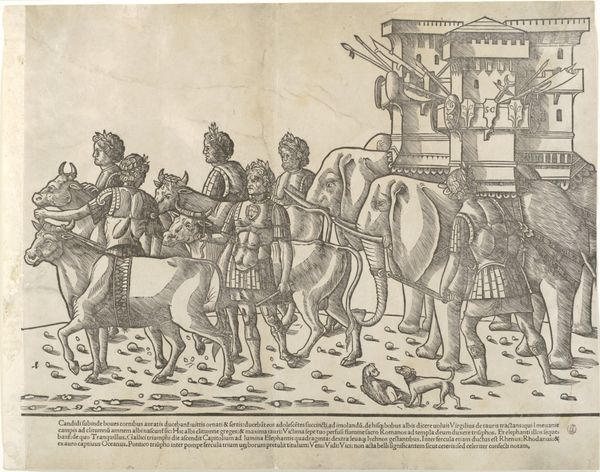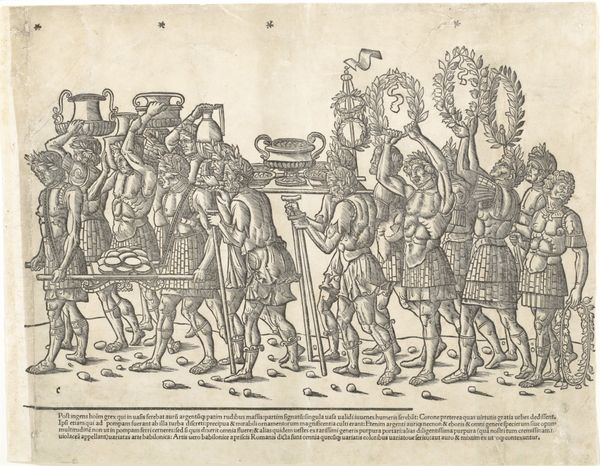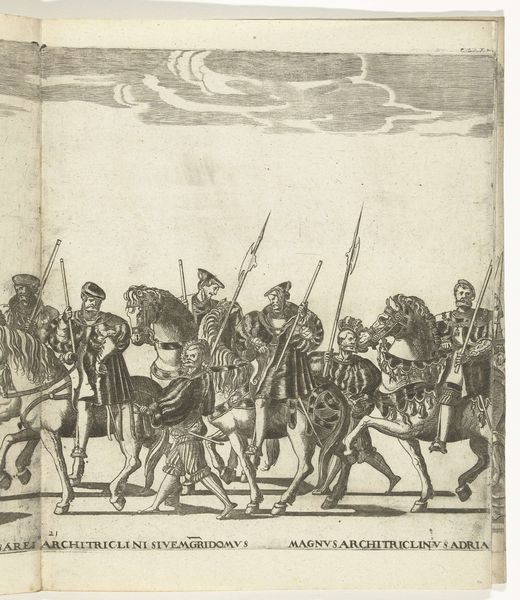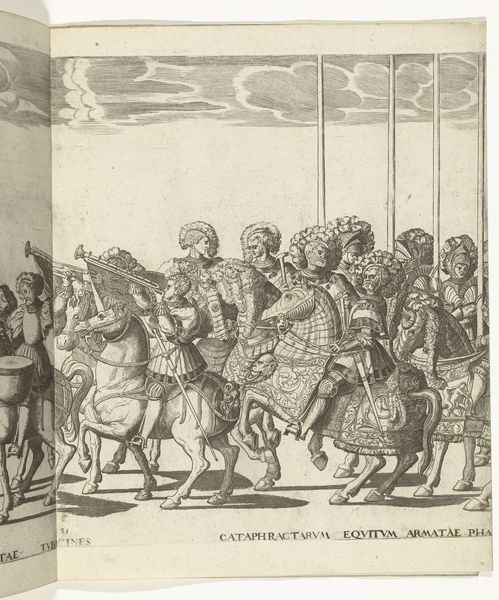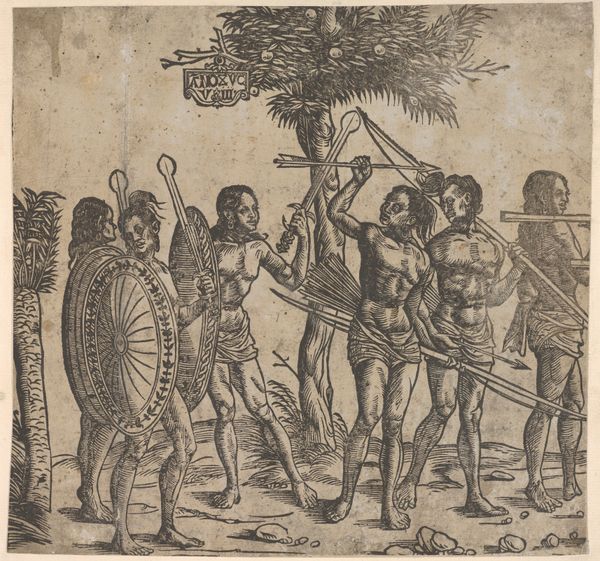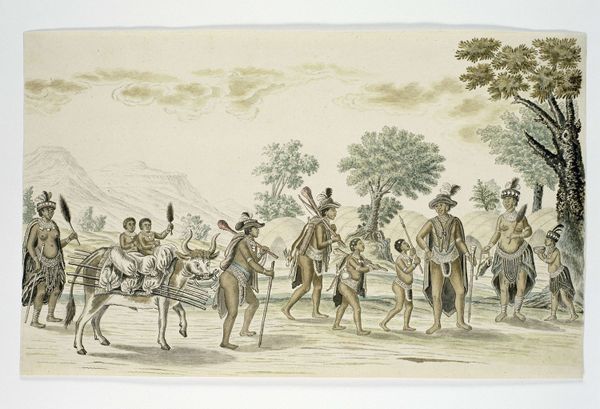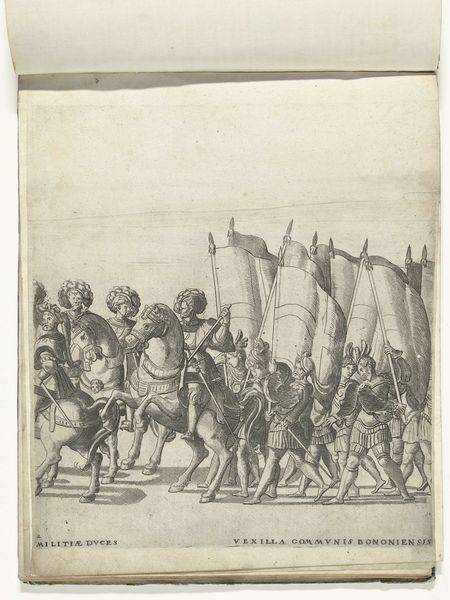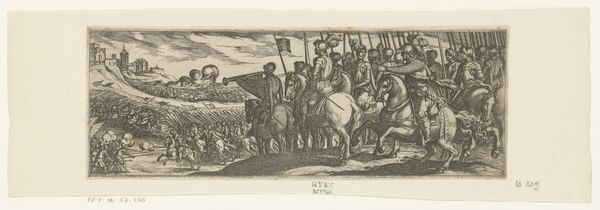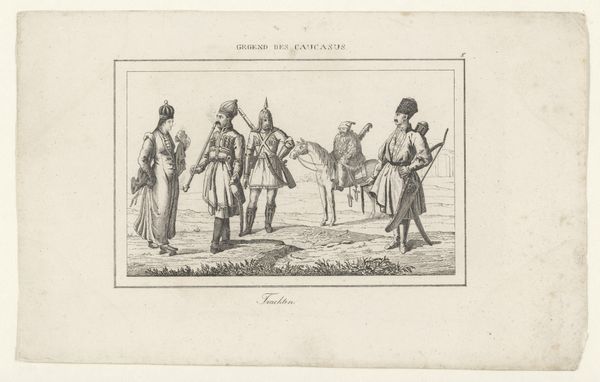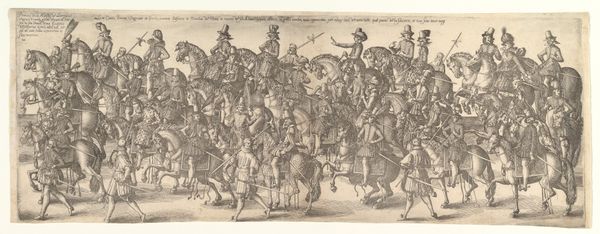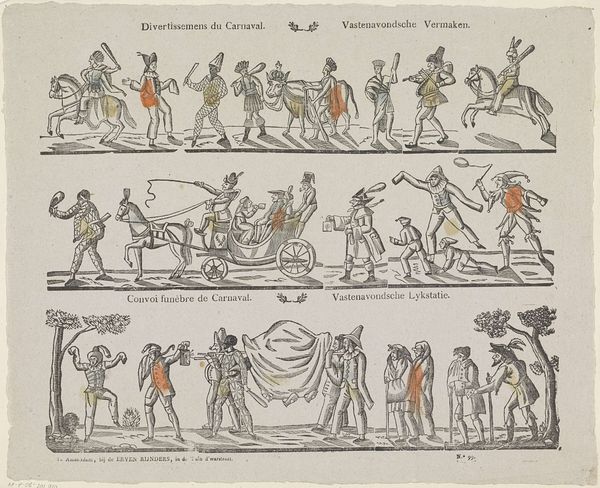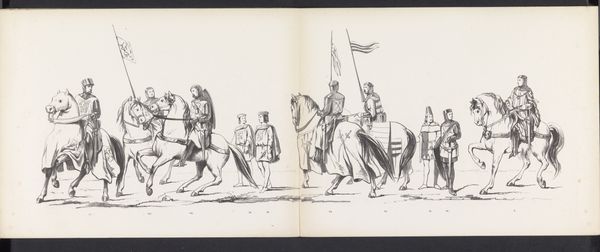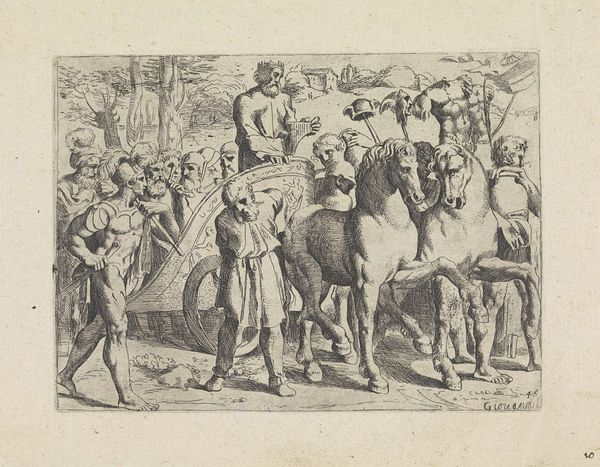
Soldiers, musicians and horses from, 'The Triumph of Caesar' 1504
0:00
0:00
drawing, carving, print
#
portrait
#
drawing
#
carving
# print
#
figuration
#
11_renaissance
#
history-painting
#
italian-renaissance
Dimensions: Height: 13 in. (33 cm) Width: 16 1/8 in. (41 cm)
Copyright: Public Domain
Curator: What a powerful scene of Roman triumph this print by Jacob of Strasbourg presents. What strikes you about it? Editor: Well, this is "Soldiers, musicians and horses from, 'The Triumph of Caesar'," made in 1504. It looks like a wood carving... sorry, woodcut print, right? It definitely conveys a sense of classical grandeur, a glorious moment captured in time, even with the somewhat crude medium. What can you tell me about this artwork? Curator: Precisely! But consider: whose triumph is this really depicting? The grandeur serves as a smokescreen. While ostensibly celebrating Caesar, prints like these, reproduced and disseminated widely, also served as political tools. Who benefits from visually linking themselves to the power of the Roman Empire in 16th-century Europe? Think about the socio-political dynamics. Editor: So, it's less about ancient Rome itself and more about how Renaissance rulers wanted to *appear*? Using Caesar as a sort of… propaganda? Curator: Exactly. Consider the power dynamics at play. This print, likely commissioned by a wealthy patron, uses the imagery of Roman triumph to reinforce their own authority and status. Notice how everyone in the scene appears similar, youthful and vigorous, as though homogenized and perfectly submissive before an all-conquering authority. How do such representations, repeated across media, influence societal power structures and reinforce certain ideals of beauty and strength, and dominance? Editor: It makes you think about who gets included in these celebrations, and who is left out, doesn't it? It’s also interesting how the printmaking process itself—making it reproducible and widely available—plays into this idea of disseminating a particular image of power. I'll definitely see similar historical artworks with more critical eyes from now on. Curator: And that, my friend, is the beginning of truly engaging with art history.
Comments
No comments
Be the first to comment and join the conversation on the ultimate creative platform.
